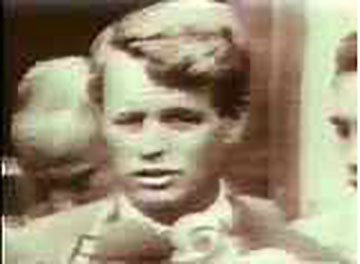Moments in Disability History 9
Willowbrook Leads to New Protections of Rights
Public shock and outcry regarding abuse and neglect of residents at the Willowbrook State School on Staten Island in New York City exploded as organized parent protests and media exposes ignited mass awareness. The timing and political openness of the period led to the incorporation of the Protection and Advocacy (P&A) System in the Developmental Disabilities Assistance and Bill of Rights Act (1975); the Education For All Handicapped Children Act, P.L. 94-142 (1975); and the Civil Rights of Institutionalized Persons Act (CRIPA)(1980). The P&A and CRIPA were the early ramps of federal civil rights legislation protecting people with disabilities, and leading to the Americans with Disabilities Act (ADA).
Used as a WWII prisoner of war institution, Willowbrook was afterwards designed for 4,000 people. By 1965, it had a population of over 6,000, the largest state-run institution for people with developmental disabilities in the world. When New York Senator Robert Kennedy toured Willowbrook in 1965, the living conditions prompted the Senator, in a televised interview, to call it a "snake pit".
In early 1972, Geraldo Rivera, an investigative reporter for WABC-TV in New York, was called by an activist physician recently fired for speaking out about the abysmal conditions at Willowbrook. Rivera's exposé, Willowbrook: The Last Great Disgrace, garnered national attention, and was an indictment of institutionalization and treatment of persons with developmental disabilities.
Robert Kennedy described Willowbrook as a "snake pit."
Please note: The video clip of Senator Robert F. Kennedy dates back to 1965. We recognize that some of the language and terminology used is now considered outdated and offensive. At the time, however, that was not the case and the content of the video clip is historically significant.

Geraldo Rivera

Bernard Carabello
A class-action lawsuit, filed against the State of New York in federal court on March 17, 1972, resulted in a "settlement" with the State Department of Mental Hygiene on May 5, 1975 to dismantle Willowbrook. This lawsuit gave impetus throughout the nation where other class action lawsuits were being pursued to accord persons with disabilities the rights of other citizens – developmental services, freedom from cruel and unusual punishment, and due process. Rivera's friendship with Bernard Carabello also helped stimulate the self-advocacy movement.
William Bronston, M.D., a physician employee on the inside, illustrated conditions and their causes at Willowbrook in his yet to be published book, Public Hostage: Public Ransom – Inside Institutional America. Attached are links to a gallery of his photo illustrations, many used in the federal trial; Senator Robert Kennedy's "snake pit" comments; and clips of Geraldo Rivera's reflections on his exposé of Willowbrook.
Sources:
Photographs from Public Hostage: Public Ransom – Inside Institutional America
Parallels In Time II: 1950-2005: A Place To Call Home
Robert F. Kennedy Video Clip About "Snake Pit"
Parallels In Time V. The Reawakening 1950-1980: B. 1950-1980 Improve the Institutions
Willowbrook: Geraldo Rivera Clip
Parallels In Time V. The Reawakening 1950-1980: F. 1970 to Present – Close The Institutions, Page 1
Geraldo Rivera – The P&A System
The Minnesota Governor's Council on Developmental Disabilities Home Page






